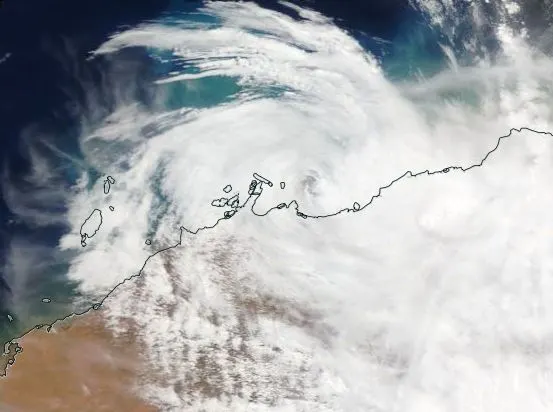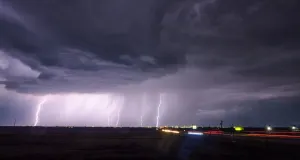
Second of two strong cyclones barrels toward Australia coast
Thousands of people have been warned to stay in shelter as the second cyclone to hit the continent in days ambles toward the coast.
The second half of a rare double cyclone threat is currently pummelling parts of Australia's northwestern coast.
On the one hand, Cyclone Veronica, once a category 4 monster, has been downgraded to a category 1 storm, and now does not appear to be set for a landfall on the Pilbara coast of the state of Western Australia. The country's Bureau of Meteorology says it is likely to weaken below tropical cyclone strength within a few hours.
On the other, the storm has been very slow moving, and its path will take it parallel to the coast. Its strong winds, gusting up to 100 km/h, will be less of a danger than its torrential rains.
"Widespread, very heavy rainfall conducive to MAJOR FLOODING is likely over the central Pilbara coast and adjacent inland areas, easing gradually during Tuesday," the bureau says. "Heavy rainfall is expected to result in significant river rises, areas of flooding and hazardous road conditions. Some roads may become impassable and some communities may become isolated."
The slow pace appears to have been foremost in authorities' minds, as they have been warning people in the region to be prepared to evacuate if necessary, and otherwise stay in shelter until the all-clear is given.
"People in that part of the world are used to cyclones but this one is different," Western Australia premier Mark McGowan told 9 News.
WATCH BELOW: REMNANTS OF TWO CYCLONES CHURN AROUND AUSTRALIA
1,600 km to the east, some 2,000 people in the country's Northern Territory began to return home after being evacuated ahead of the arrival of Cyclone Trevor, which made landfall as a Category 4 storm over the weekend.
ABC News says only around six people who refused to leave were left in the storm's path, but initial reports say there have been no deaths or serious injuries, nor has there been excessive damage to infrastructure.
IS A CYCLONE THE SAME AS A HURRICANE?
They are named differently and they spin in a different directions, but cyclones form the exact same way as hurricanes do -- over warm ocean waters near the equator. The warm, moist air over the ocean rises upward from near the surface causing an area of lower air pressure below. Storms that form north of the equator spin counterclockwise. Storms south of the equator spin clockwise. As a cyclone rotates faster and faster, an eye can form in the centre. It is very calm and clear in the eye, with very low air pressure.
WATCH BELOW: QUEENSLAND POLICE TAKE TO THE SKIES TO VISIT RESIDENTS IMPACTED BY CYCLONE TREVOR
With files from News.com.au and the ABC










